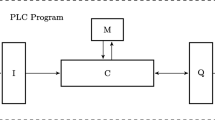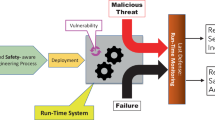Abstract
Fault injection attack is an extremely powerful technique to extract secrets from an embedded system. Since their introduction, a large number of countermeasures have been proposed. Unfortunately, they suffer from two major drawbacks: a very high cost on system performance and a security frequently questioned. The first point can be explained by their design, based on techniques from reliability domain, which result in solutions protecting against fault models either highly improbable in a context of attack, or that do not permit secret extraction. At the opposite, the second point is due to the use of an incomplete attacker model for the security evaluation at design step. In this paper, we propose a new approach: multi-level formal verification, based on models encompassing the capabilities of the attacker, the susceptibility to faults of the hardware platform hosting the implementation, and the constraints imposed by the algorithm used for secret extraction. We first explain that the success of a fault injection attack depends solely on races between signals, which can be analyzed automatically. Then, we perform a multi-level evaluation on a hardware implementation of AES-128, which shows that the overhead of a countermeasure can be divided by eight while maintaining an almost identical level of security. Finally, we extend the model to electromagnetic injection.










Similar content being viewed by others
Notes
Secret keys are usually stored encrypted in a nonvolatile memory to prevent direct reading. At boot or later, they are decrypted and saved in the main system memory.
A SE contains a pair of NAND logic gates in which outputs are looped back to the inputs of the other.
The one which imposes the maximum operating frequency of the system (see Sect. 2.1).
As defined in [17].
A xc6slx150 Spartan-6 containing 23 038 slices.
References
Anderson, R., Kuhn, M.: “Tamper resistance: A cautionary note,” In: Proceedings of the 2nd Conference on Proceedings of the Second USENIX Workshop on Electronic Commerce - vol. 2, ser. WOEC’96, pp. 1–1. Berkeley, CA, USA: USENIX Association, (1996). [Online]. Available: http://dl.acm.org/citation.cfm?id=1267167.1267168
Boneh, D., DeMillo, R.A., Lipton, R.J.: “On the importance of checking cryptographic protocols for faults (extended abstract),” In: Advances in Cryptology - EUROCRYPT ’97, International Conference on the Theory and Application of Cryptographic Techniques, Konstanz, Germany, May 11–15, 1997, Proceeding, ser. Lecture Notes in Computer Science, W. Fumy, Ed., vol. 1233, pp. 37–51. Springer, 1997 [Online]. Available: doi:10.1007/3-540-69053-0_4
Biham, E., Shamir, A.: “Differential fault analysis of secret key cryptosystems,” In: Advances in Cryptology - CRYPTO ’97, 17th Annual International Cryptology Conference, Santa Barbara, California, USA, August 17–21, 1997, Proceedings, ser. Lecture Notes in Computer Science, B. S. K. Jr., Ed., vol. 1294, pp. 513–525. Springer, 1997 [Online]. Available: doi:10.1007/BFb0052259
Rivain, M.: “Differential fault analysis on DES middle rounds,” In: Cryptographic Hardware and Embedded Systems - CHES 2009, 11th International Workshop, Lausanne, Switzerland, September 6-9, 2009, Proceedings, ser. Lecture Notes in Computer Science, C. Clavier and K. Gaj, Eds., vol. 5747, pp. 457–469. Springer, 2009 [Online]. Available: doi:10.1007/978-3-642-04138-9_32
Piret, G., Quisquater, J.: “A differential fault attack technique against SPN structures, with application to the AES and KHAZAD,” In: Cryptographic Hardware and Embedded Systems - CHES 2003, 5th International Workshop, Cologne, Germany, September 8-10, 2003, Proceedings, ser. Lecture Notes in Computer Science, C. D. Walter, Ç. K. Koç, and C. Paar, Eds., vol. 2779, pp. 77–88. Springer, 2003 [Online]. Available: doi:10.1007/978-3-540-45238-6_7
Barenghi, A., Bertoni, G.M., Breveglieri, L., Pelosi, G., Palomba, A.: “Fault attack to the elliptic curve digital signature algorithm with multiple bit faults,” In: Proceedings of the 4th International Conference on Security of Information and Networks, SIN 2011, Sydney, NSW, Australia, November 14-19, 2011, M. A. O. an Atilla Elçi an Oleg B. Makarevich an Sorin A. Huss an Josef Pieprzyk an Lyudmila K. Babenko an Alexander G. Chefranov an Rajan Shankaran, Ed. ACM, 2011, pp. 63–72. [Online]. Available: doi:10.1145/2070425.2070438
Maingot, V., Leveugle, R.: “Error detection code efficiency for secure chips,” In: 13th IEEE International Conference on Electronics, Circuits, and Systems, ICECS 2006, pp. 561–564. Nice, France, December 10–13, 2006. IEEE, 2006 [Online]. Available: doi:10.1109/ICECS.2006.379850
Trichina, E., Korkikyan, R.: “Multi fault laser attacks on protected CRT-RSA,” In: 2010 Workshop on Fault Diagnosis and Tolerance in Cryptography, FDTC 2010, Santa Barbara, California, USA, 21 August 2010, L. Breveglieri, M. Joye, I. Koren, D. Naccache, and I. Verbauwhede, Eds. IEEE Computer Society, 2010, pp. 75–86. [Online]. Available: doi:10.1109/FDTC.2010.14
Amiel, F., Villegas, K., Feix, B., Marcel, L.: “Passive and active combined attacks: Combining fault attacks and side channel analysis,” In: Fourth International Workshop on Fault Diagnosis and Tolerance in Cryptography, 2007, FDTC 2007: Vienna, Austria, 10 September 2007, L. Breveglieri, S. Gueron, I. Koren, D. Naccache, and J. Seifert, Eds. IEEE Computer Society, 2007, pp. 92–102. [Online]. Available: doi:10.1109/FDTC.2007.4318989
Skorobogatov, S.P., Anderson, R.J.: “Optical fault induction attacks,” In: Cryptographic Hardware and Embedded Systems - CHES 2002, 4th International Workshop, Redwood Shores, CA, USA, August 13-15, 2002, Revised Papers, ser. Lecture Notes in Computer Science, B. S. K. Jr., Ç. K. Koç, and C. Paar, Eds., vol. 2523, pp. 2–12. Springer, 2002 [Online]. Available: doi:10.1007/3-540-36400-5_2
Balasch, J., Gierlichs, B., Verbauwhede, I.: “An in-depth and black-box Characterization of the effects of clock glitches on 8-bit MCUs,” In: 2011 Workshop on Fault Diagnosis and Tolerance in Cryptography, FDTC 2011, Tokyo, Japan, September 29, 2011. IEEE,2011, pp. 105–114
Kelley, E., Motika, F., Motika, P., Motika, E.: “Secure credit card,” Nov. 4 2003, “US Patent 6,641,050”. [Online]. Available: https://www.google.com/patents/US6641050
Barenghi, A., Breveglieri, L., Koren, I., Naccache, D.: “Fault injection attacks on cryptographic devices: Theory, practice, and countermeasures,” Proceedings of the IEEE, vol. 100, no. 11, pp. 3056–3076, 2012. [Online]. Available: doi:10.1109/JPROC.2012.2188769
Canivet, G., Leveugle, R., Clediere, J., Valette, F., Renaudin, M.: “Characterization of effective laser spots during attacks in the configuration of a virtex-II FPGA,” In: VLSI Test Symposium, 2009. VTS ’09. 27th IEEE, 2009, pp. 327–332
Dehbaoui, A., Dutertre, J., Robisson, B., Tria, A.: “Electromagnetic transient faults injection on a hardware and a software implementations of AES,” In: 2012 Workshop on Fault Diagnosis and Tolerance in Cryptography, Leuven, Belgium, September 9, 2012, G. Bertoni and B. Gierlichs, Eds. IEEE Computer Society, 2012, pp. 7–15. [Online]. Available: doi:10.1109/FDTC.2012.15
Ordas, S., Guillaume-Sage, L., Tobich, K., Dutertre, J., Maurine, P.: “Evidence of a larger EM-induced fault model,” In: Smart Card Research and Advanced Applications - 13th International Conference, CARDIS 2014, Paris, France, November 5-7, 2014. Revised Selected Papers, ser. Lecture Notes in Computer Science, M. Joye and A. Moradi, Eds., vol. 8968, pp. 245–259. Springer, 2014, [Online]. Available: doi:10.1007/978-3-319-16763-3_15
Ali, S., Mukhopadhyay, D., Tunstall, M.: “Differential fault analysis of AES using a single multiple-byte fault,” IACR Cryptology ePrint Archive, vol. 2010, p. 636, 2010. [Online]. Available: http://eprint.iacr.org/2010/636
Agoyan, M., Dutertre, J.-M., Naccache, D., Robisson, B., Tria, A.: “When clocks fail: on critical paths and clock faults,” In Smart Card Research and Advanced Application, 9th IFIP WG8.8/11.2 International Conference, CARDIS 2010, Passau, Germany, April 14-16, 2010. Proceedings, ser. Lecture Notes in Computer Science, D. Gollmann, J.-L. Lanet, and J. Iguchi-Cartigny, Eds., vol. 6035, pp. 182–193. Springer, (2010)
Riscure, “VC Glitcher.” [Online]. Available: https://www.riscure.com/security-tools/hardware/vc-glitcher
Zussa, L., Dehbaoui, A., Tobich, K., Dutertre, J., Maurine, P., Guillaume-Sage, L., Clédière, J., Tria, A.: “Efficiency of a glitch detector against electromagnetic fault injection,” In: Design, Automation & Test in Europe Conference & Exhibition, DATE 2014, Dresden, Germany, March 24-28, 2014. IEEE, 2014, pp. 1–6. [Online]. Available: doi:10.7873/DATE.2014.216
Acknowledgements
This research was supported by the project PISCO.
Author information
Authors and Affiliations
Corresponding author
Rights and permissions
About this article
Cite this article
Sauvage, L., Graba, T. & Porteboeuf, T. Multi-level formal verification. J Cryptogr Eng 7, 87–95 (2017). https://doi.org/10.1007/s13389-016-0144-3
Received:
Accepted:
Published:
Issue Date:
DOI: https://doi.org/10.1007/s13389-016-0144-3




